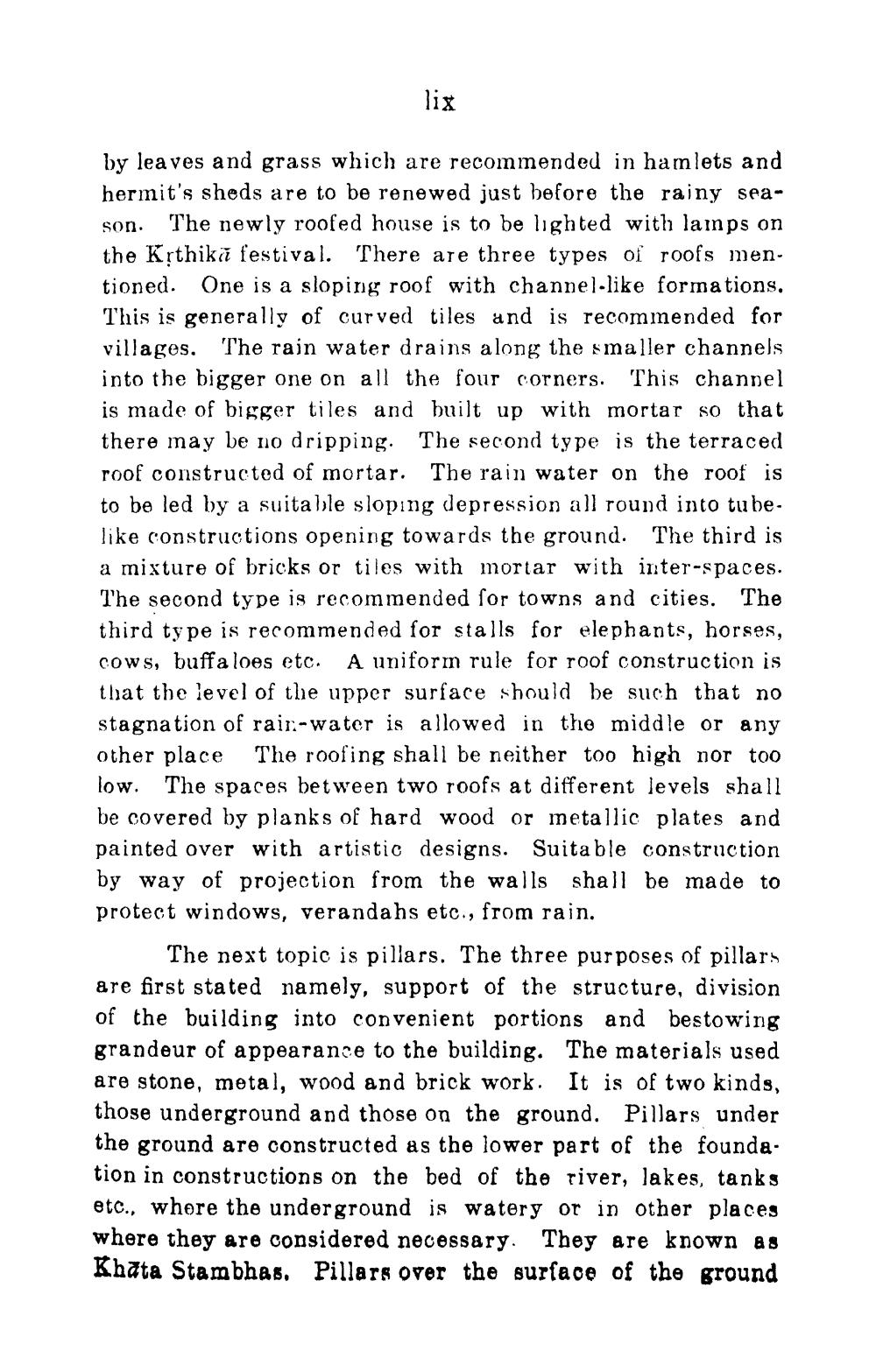________________
lix
by leaves and grass which are recommended in hamlets and hermit's sheds are to be renewed just before the rainy season. The newly roofed house is to be lighted with lainps on the Kịthikī festival. There are three types of roofs mentioned. One is a sloping roof with channel-like formations. This is generally of curved tiles and is recommended for villages. The rain water drains along the smaller channels into the bigger one on all the four corners. This channel is made of bigger tiles and built up with mortar so that there may be no dripping. The second type is the terraced roof constructed of mortar. The rain water on the roof is to be led by a suitable sloping depression all round into tubelike constructions opening towards the ground. The third is a mixture of bricks or tiles with mortar with inter-spa The second type is recommended for towns and cities. The third type is recommended for stalls for elephants, horses, cows, buffaloes etc. A uniform rule for roof construction is that the level of the upper surface should be such that no stagnation of rair-water is allowed in the middle or any other place The roofing shall be neither too high nor too low. The spaces between two roofs at different levels shall be covered by planks of hard wood or metallic plates and painted over with artistic designs. Suitable construction by way of projection from the walls shall be made to protect windows, verandahs etc., from rain.
The next topic is pillars. The three purposes of pillars are first stated namely, support of the structure, division of the building into convenient portions and bestowing grandeur of appearance to the building. The materials used are stone, metal, wood and brick work. It is of two kinds, those underground and those on the ground. Pillars under the ground are constructed as the lower part of the foundation in constructions on the bed of the river, lakes, tanks etc., where the underground is watery or in other places where they are considered necessary. They are known as Khata Stambhas. Pillars over the surface of the ground




